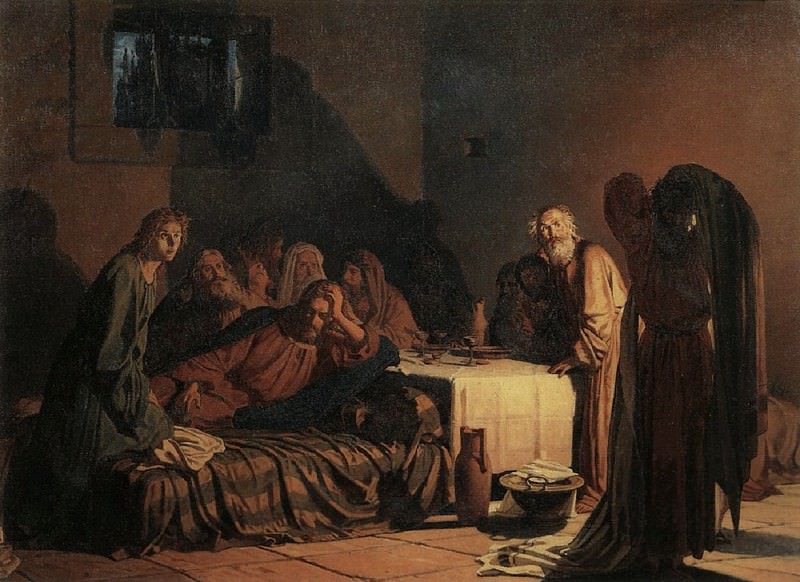The Last Supper Nikolay Ge (1831-1894)
Nikolay Ge – The Last Supper
Edit attribution
Download full size: 1224×890 px (0,1 Mb)
Painter: Nikolay Ge
Today, Ge’s painting The Last Supper is considered a mighty work, reflecting the artist’s specific perception of the biblical myth. In a small room with high ceilings and stone walls, in a house in the city of Jerusalem, there is an ordinary couch on which Jesus is leaning with his head bowed. The young John is at his feet, with the other apostles standing with their shoulders behind him. The gray-haired Peter is at the head of the table.
Description of the painting "The Last Supper" by Nikolai Ge
Today, Ge’s painting The Last Supper is considered a mighty work, reflecting the artist’s specific perception of the biblical myth. In a small room with high ceilings and stone walls, in a house in the city of Jerusalem, there is an ordinary couch on which Jesus is leaning with his head bowed. The young John is at his feet, with the other apostles standing with their shoulders behind him. The gray-haired Peter is at the head of the table. Behind him you can see several other fuzzy dark figures.
To the right, by the wall, there is a very powerful lamp, very brightly illuminating the entire figure of Peter (most of all his face), the white tablecloth on the table, the tilted head of Christ and the anxious and distraught eyes of the apostles. We cannot see the lampstand itself: it is obscured by the dark silhouette of Judas (a tall man with a beard). He is facing us, and the figure casts a shadow over us. There is a biblical symbolism in this: by moral and righteous, sincere and moderate light, by the radiance of kindness and wisdom the table is illuminated - an artistic personification of the communion of spiritual food for the apostles. This light illuminates Christ, the confused gazes of the apostles, directed at Judas, it hits and Peter, guarding the gates of paradise. They are all outraged and confused by Judas’ act, which has obscured their light of reason. Only Jesus is calm and sad. He was saddened, above all, that the shadow of insatiable greed could so easily overtake us. In the painting, Judas is the artistic embodiment of the figurative inhumanity that obscures all that is bright and beautiful in the human soul.
On his canvas, Nicholas Ge managed to reveal Leonardo’s idea of man’s immense greed and selfishness. He believed that if man is not limited by the law, he would many times surpass the cruelty, insatiability and barbarity of any animal.
Кому понравилось
Пожалуйста, подождите
На эту операцию может потребоваться несколько секунд.
Информация появится в новом окне,
если открытие новых окон не запрещено в настройках вашего браузера.
You need to login
Для работы с коллекциями – пожалуйста, войдите в аккаунт (open in new window).




















You cannot comment Why?